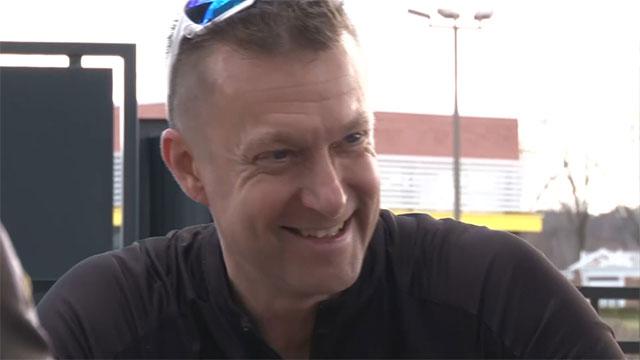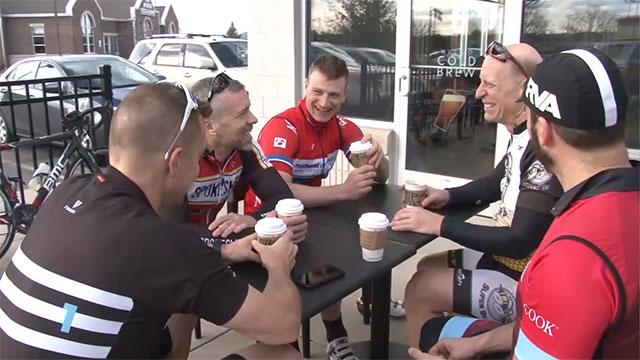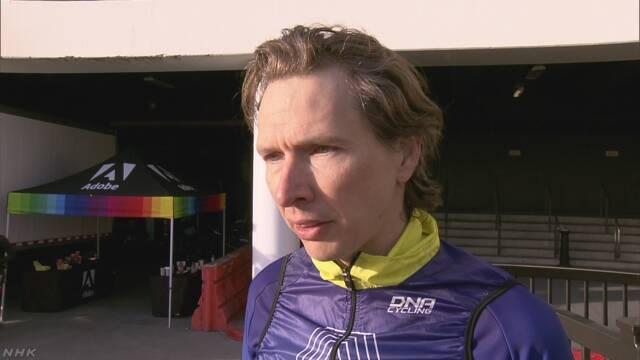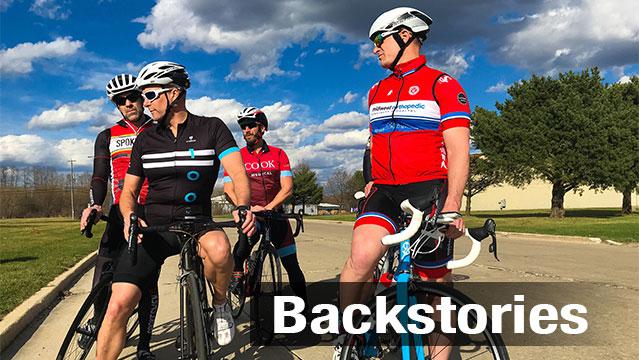"I’m pretty passionate about cycling," he says, "always have been."
Jason Kayzar is the Vice President of Sales and Services at Power Test, a company that makes industrial testing equipment, and on this sunny, breezy, Wisconsin day, we meet him outside his office atop his black Trek carbon fiber bicycle. He is joined by Frederick, Pat, and Dave, business executives from other firms and fellow riders. They banter and laugh as they ride down the flat road on their way to get some coffee and talk business. Looking at them, you’d think they are brothers or childhood friends.
"Cycling is outstanding for my business," Kayzar says. "I used to own a small regional telecommunications sales company and I was able to integrate cycling into my business and star making some friends and making some business connections, and it’s taken off from there."

Because everything in life needs a clever moniker, what Kayzar engages in is called "sweatworking," a hybrid between networking and sweating in which professionals meet with clients and other professionals with the aim of establishing relationships, talk business, and breaking a sweat.
According to a 2018 survey by America’s leading professional networking site Linkedin, 51% of professionals prefer non-traditional networking such as this. And a simple twitter search of the term yields sweatworking sessions as disparate (yoga, soul cycling, zumba) as the organizations and locals that host them (JP Morgan in New York and the Golden Chamber of Commerce in Colorado to name two).
But what is the allure of sweating with clients or colleagues? Could it be a response to the growing omnipresence of the connected life? Or maybe it allows ultra-busy professionals to exercise while remaining productive. But watching Kayzar it seems that there is something more fundamental at play: shared experience leads to meaningful relationships which make it easier to network.

Ben Rabner, Head of Experiential Marketing for Adobe, has been using cycling to build connections with Adobe’s clients and partners for years through the shared experience of cycling. "Experiential marketing is really creating experience for us to take our customers out and talk about their business challenges in kind of memorable, meaningful moments," he says. "Those experiences are better than another cocktail or steak dinner."
Since 2017, Adobe has organized 100 cycling rides, 27 of those just this year, and 22 yoga and hiking experiences.

During Adobe’s Las Vegas conference in late March, 22 executives from companies such as Subaru, 24-hour fitness, Marriott, and others, met outside a conference hall at six in the morning for an Adobe organized "coffee ride." The riders all wore Adobe branded cycling gear, and led by Rabner, set out for an hour-long ride that took them past the Las Vegas strip and to the Vegas suburbs. They rode, they chatted, they laughed. "Definitely better than the standard cocktail," an executive from Subaru said afterwards.
"We love doing these experiences," Rabner says. "Executives would rather get up and go do a great workout or run or spin class or hike with peers and network."

In Wisconsin at the end of the destination, Jason, Frederick, Pat, and Dave, sit outside a coffee house sipping coffee and talking about the next ride and how things are at their respective jobs. The conversation is light, friendly, comfortable, authentic. What started as a shared interest in bikes and networking has developed, at least to this observer, into legitimate camaraderie.
"I always thought that networking was talking to people. Putting your business suit on and putting your tie on and trying to get people to like you or buy things from you. And networking is just finding commonality," says Kayzar. "People tend to gravitate to people that they like, in personal and in business as well, so why not do business with people that you like?"

